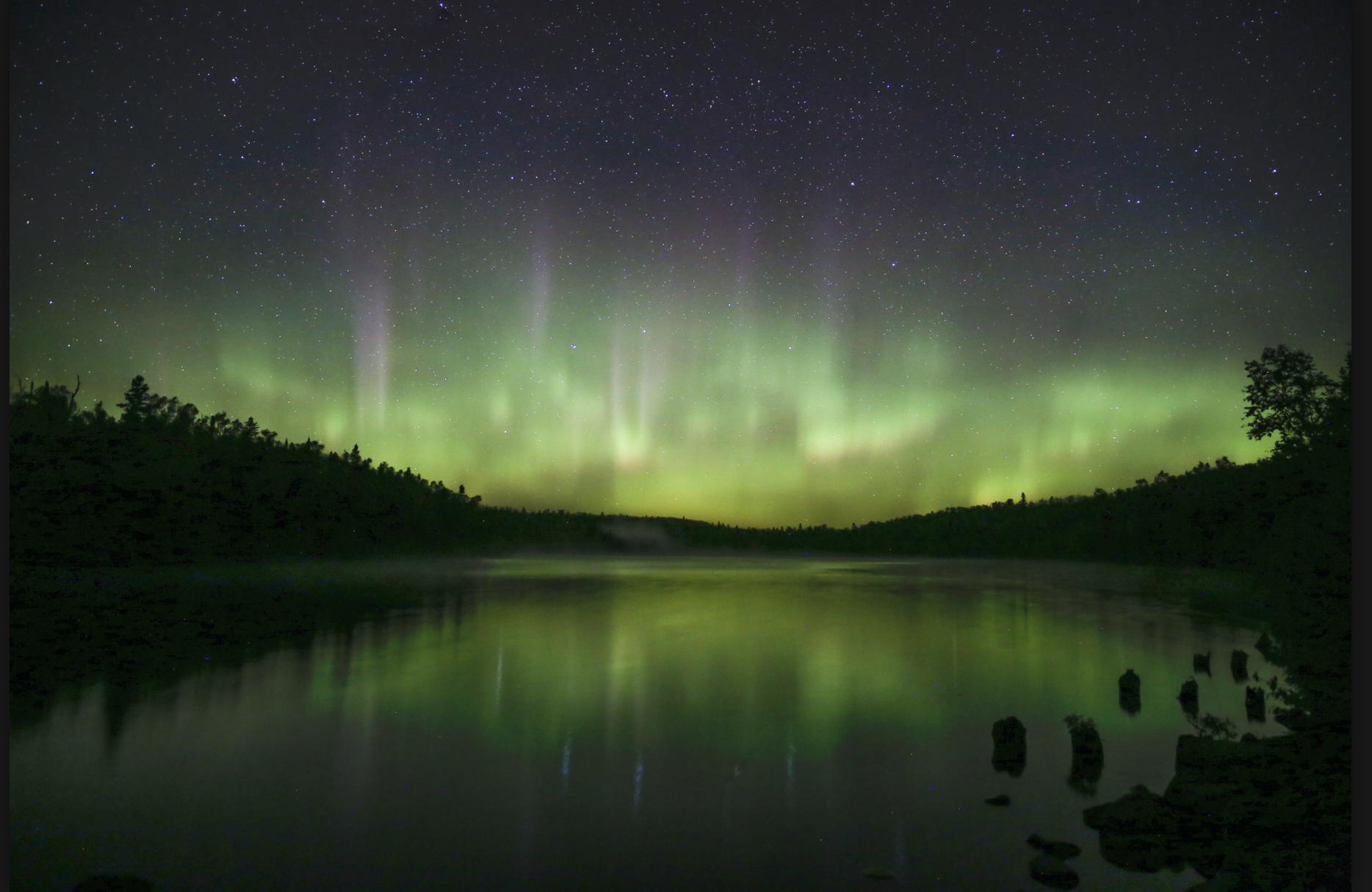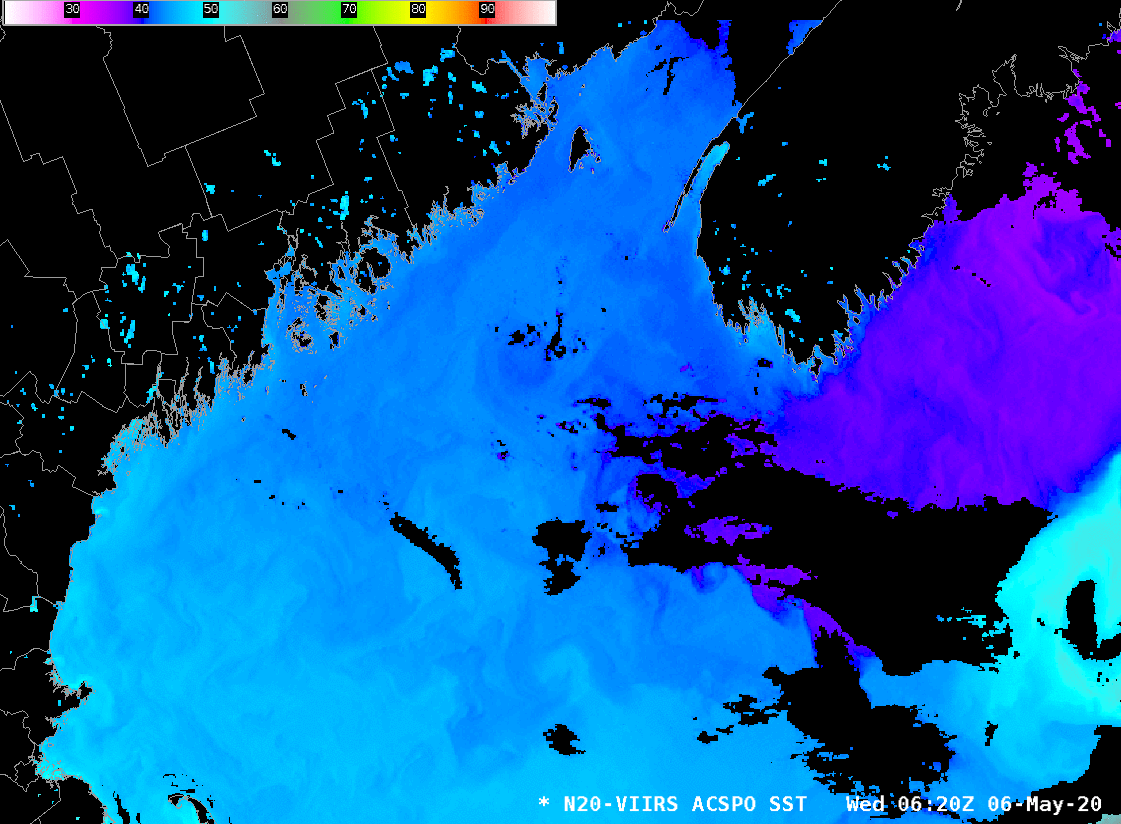
[ Archive ]

 |
CIMSS-NOAA Weekly Report [ Archive ] |
 |
ASPB AND CIMSS WEEKLY HIGHLIGHTS FOR THE WEEK ENDING MAY 8, 2020
PRODUCTS AND APPLICATIONS:
AWARDS AND RECOGNITION:
PUBLICATIONS:
Satellite Precipitation Measurement Book Chapter - Global Snowfall: A chapter titled "Global snowfall detection and measurement" was recently published in a Springer Professional book titled Satellite Precipitation Measurement - Volume 2. The chapter summarizes global snowfall measuring efforts and presents new research results using CloudSat Cloud Profiling Radar observations spanning 2006-2017. Mark Kulie (NOAA/NESDIS) is the lead author, while Norm Wood (Cooperative Institute for Meteorological Satellite Studies, CIMSS) and Tristan L'Ecuyer (CIMSS) are co-authors. (M. Kulie, E/RA2, 608-263-6583, mark.kulie@noaa.gov)
WORKSHOPS, CONFERENCES, AND MEETINGS:
TRAINING AND EDUCATION:
VISIT training on NOAA/CIMSS ProbSevere: Scott Lindstrom from the Cooperative Institute for Meteorological Satellite Studies (CIMSS) gave Virtual Institute for Satellite Integration Studies (VISIT) training on the NOAA/CIMSS ProbSevere products that are used by National Weather Service forecasters to bolster confidence in warning issuance. The product suite includes ProbWind, ProbHail and ProbTor. This live training was given to forecasters at the Binghamton (NY) Forecast Office. (Scott Lindstrom, CIMSS, 608 263 4425)
VISIT Module on GOES-R IFR Probability updated: Scott Lindstrom from the Cooperative Institute for Meteorological Satellite Studies (CIMSS) has updated the The Virtual Institute for Satellite Integration Training (VISIT) instructional module on GOES-R Instrument Flight Rule (IFR) Probability fields. The updated module now has more examples that use GOES-16 and GOES-17 data, and the training is offered monthly through the VISIT program. A recorded version of this training has also been produced and is available online at https://www.youtube.com/watch?v=lzYPMSnpBG4. (Scott Lindstrom, CIMSS, 608 263 4425)
VISIT Training on Mesoscale Convective Vortices: Scott Lindstrom from the Cooperative Institute for Meteorological Satellite Studies (CIMSS) gave Virtual Institute for Satellite Integration Studies (VISIT) training on Mesoscale Convectively-Generated Vortices (MCVs) to forecasters at the Huntsville, Alabama Forecast Office. This remotely-given live training, originally created in 2004, was updated in 2019 by Scott Bachmeier, CIMSS and again in April 2020 by Scott Lindstrom. (Scott Lindstrom, CIMSS, 608 263 4425)
MEDIA AND OUTREACH:
SSEC and CIMSS Scientists in the News: Scientists at the University of Wisconsin-Madison (UW) Space Science and Engineering Center (SSEC) and the Cooperative Institute for Meteorological Satellite Studies (CIMSS) provide expert commentary, interviews, and imagery to news media and participate in events to promote science. In the news this week: 1) SSEC News announced the winners of the 2020 Atmospheric, Oceanic, and Space Sciences (AOSS) Photo Contest: https://www.ssec.wisc.edu/news/articles/12785. 2) SSEC Director Brad Pierce spoke with Wisconsin Public Radio's Central Time on how changes in travel habits due to the coronavirus have impacted air quality in the Great Lakes region. Listen to the segment here: https://www.wpr.org/listen/1635581. 3) CIMSS Satellite Blog contributors John Cintineo, Scott Bachmeier and Scott Lindstrom published posts on "Supercells in the Southeast" (May 6), "ACSPO SSTs from Direct Broadcast data" (May 6), "Strong winds across the Midwest causing blowing dust and gravity waves" (May 5), "River Flooding in Southwest Alaska" (May 5", "Derecho causing severe weather from the Midwest to the Mid-South" (May 3), "Boundary layer wave clouds over Kansas" (May 2", "Fires in the Upper Midwest" (May 1), and "NUCAPS and dry air in the Upper Midwest" (May 1). Read more at the CIMSS Satellite Blog: https://cimss.ssec.wisc.edu/satellite-blog/. (E. Verbeten, SSEC, B. Pierce, SSEC, J. Cintineo, CIMSS, S. Bachmeier, CIMSS, S. Lindstrom, CIMSS, J. Phillips, SSEC, 608-262-8164)
 (Click image to enlarge)
(Click image to enlarge)
Figure: AOSS Photo Contest, 1st place: Auroras over northern Minnesota. Submitted by Isaac Schluesche, a student in the UW-Madison Department of Atmospheric and Oceanic Sciences. Credit: I. Schluesche.
 (Click image to enlarge)
(Click image to enlarge)
Figure: Suomi NPP and NOAA-20 VIIRS data can be used to create accurate sea-surface temperature fields using the Advanced Clear-Sky Processor for Ocean algorithms (ACSPO). Image toggles between ACSPO SSTs over Gulf of Maine from Suomi NPP (at 0620 UTC) and from NOAA-20 (at 0710 UTC). Credit: NOAA, CIMSS.
OTHER:
| Archived Weeklies Page | Submit a report item |